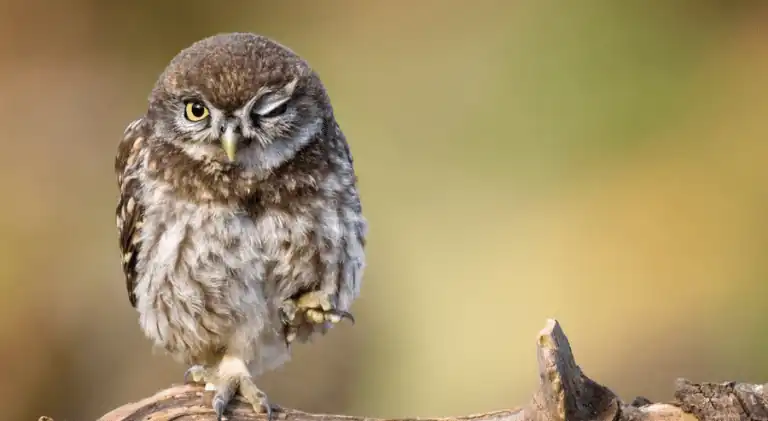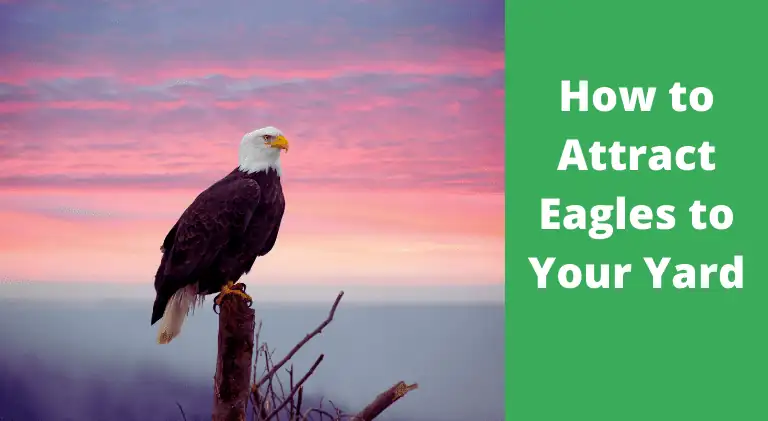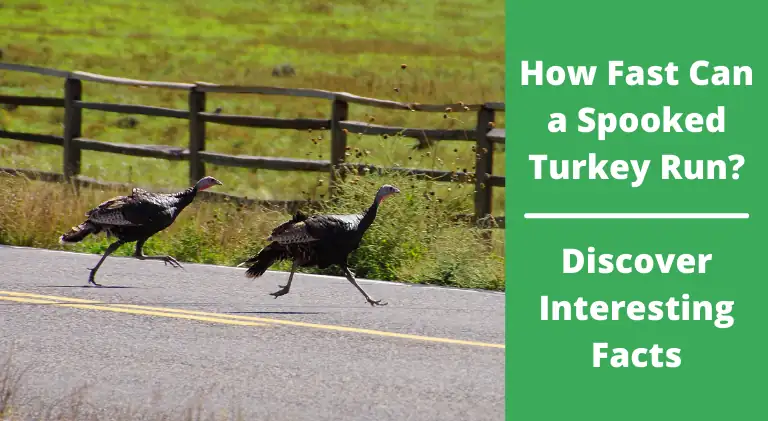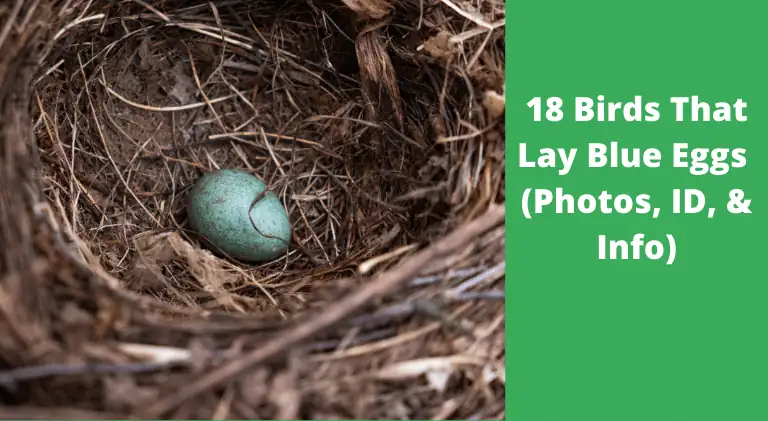Can Birds See at Night? Everything Explained
You may have already heard that birds have sharp eyesight and they can see their prey from a long distance. However, can birds see at night too?
Most birds such as hawks, owls, frogmouth, etc can easily see in the dark and they are excellent night hunters. However, they are not able to see in completely dark situations like cats.
However, I know that’s not a complete answer and to answer the above question i.e. can birds see at night? I have to explain various concepts.
Don’t worry I will guide you properly and will tell you about some interesting things that you can share with your kids and friends too.
So without any further ado let’s get started.
Anatomy of a Bird’s Eye View

At first, you might be wondering why birds like owls can see in complete darkness. Are their eyes specially designed for this?
The answer is that all the features of an owl’s eye are created to serve its nocturnal lifestyle. The large eyes of owls let them collect more light to spot faint prey, while their pupils are shaped like slits to protect their eyes from the multiple light sources that exist in daylight.
However, it’s not just owls that have the ability to see well at night, other nocturnal birds have these features too! Unlike mammals birds’ eyes are much more similar to the eyes of reptiles.
It is because their eyes aren’t spherical but are more flatter in shape that helps them to have a better panoramic view.
In addition, most birds don’t have a tapetum lucidum, which is an inner reflective layer of the eye that enhances night vision in some animals such as cats and dogs.
The tapetum lucidum reflects light inside the retina to give more exposure to photoreceptor cells present there and thus give better night vision to some animals.
In addition, Owls have a special outer layer in their eyes called the pecten. The pecten reflects light from its surface and also absorbs any excess light which gets reflected from the retina during dark adaptation.
In this way, the pecten controls how much ambient light is let in so that eyes can be adjusted to darkness too.
But what about the rest of the songbirds, do they have good night vision?
Can Songbirds See in the Dark?
As you might have guessed from its name, songbirds are active during the day. But don’t assume that means they can’t see at night! They can see quite well at night-time. The reason is simply that their lifestyle doesn’t require good night vision.
This is why you’ll find that songbirds have eyeballs that are on the smaller side, with less of a difference between their eyes. Songbird eyes also don’t feature as much special equipment either.
So yes, songbirds do have night vision but it’s not quite as good as other birds’.
Can Birds See Colours?
Many people assume that birds are color blind because they cannot see colors like us humans.
However, this is not true all the birds have cones in their retina just like humans do, thus it helps them to see colors and many animals can see colors in dim light.
Apart from this, Birds have many adaptations which help them to see better in the dark.
How are Birds Eye Special As Compared to Humans
According to science, the bird-eye has an advanced structure as compared to a regular human or other land animal eyes. Their eyes possess tetrachromats which means they have four cones in their retina as compared to us with just three.
The fourth cone helps them to see ultraviolet color and allows color vision in very low light conditions.
It is said that a bird can see 10 times better than we can at night-time!

Ultra Violet Vision in Birds (UV)
Birds are the only animals with the ability to see ultraviolet light. This is why they are sometimes called ‘the Wingmen of Mother Nature’.
But that’s not all, some birds also have the ability to change their retina pigment which allows them to adapt to various conditions!
Many birds are incredible fliers, which means they have to be able to navigate through many different types of terrain.
The ability to see in UV allows them to differentiate between the various substrates that might be blocking their path.
For instance, water can reflect UV light in a way that is visible to the bird, but the surrounding land does not.
This allows the bird to use this difference in reflection to orient itself and find its way around.
Light Reflection
Not only can birds see ultraviolet light but they can also reflect it onto their retina with the help of a mechanism called ‘the pecten‘.
The pecten reflects light from its surface and absorbs any excess light which gets reflected from the retina during dark adaptation.
In this way, the pecten controls how much ambient light is let in so that eyes can be adjusted to darkness too.
In conclusion, birds have some incredible specializations for seeing at night. Birds can see better than most animals at night due to their unique adaptations.
Some of those include being able to see UV light, being able to orientate using the reflection of UV light off substrates, and also changing the color of the retina pigment!
All these features combine to give birds excellent night vision as compared to other animals.
Also, Read – How to Attract Eagles to Your Yard?
Color Perception of Birds – Do all birds see the same colors as we do?
There are two types of pigments in the retina which are sensitive to different wavelengths of light. One is called ‘S’ cones and the other is called ‘M’-cones.
Both these pigment cones come in three types each, for instance, humans have S1-S3, M1-M3 and we perceive them as short, medium, and long wavelengths.
However, in birds, they have UV1-UV3 for ‘S’-cones and violet1-violet3 for ‘M’-cones. This means that birds can see around 100 times more light than humans!
While the world might be pitch dark to us, it is full of light for birds.
Since they can see in the ultraviolet range, many researchers are now hypothesizing that they can see colors that are invisible to humans!
Motion Detection
Birds have a second sensory system called ‘the W-system’.
This sensory system is present in the retina and allows them to see even better under low light conditions.
It has been said that they can detect motion as slow as 0.5 ms!
If you do the math yourselves, that is just 1/20th of a second!
The Difference Between Diurnal and Nocturnal Birds in Terms of Sights
Many people think that all birds see better during the daytime as compared to nighttime.
It has been seen that some nocturnal species have poorer day vision as compared to diurnal ones!
For instance, the barn owl – a nocturnal bird – has about as good daytime vision as humans do.
This just goes to show how good night vision can be.
So, what is it about night vision that makes it so great? Well, there are a couple of things including the fact that there is less light at night which means that birds don’t have to work as hard on their daytime visual tasks.
Also, in the dark they can break up the light and reflect it onto the retina multiple times, thus giving them even better vision.
However, this is not something that can be said for every nocturnal bird. For instance, the Kiwi – a nocturnal bird – has terrible day vision as compared to other birds!
The reason for this is believed to be related to the fact that it hunts for prey at night.
Also, since Kiwis are unable to see during the daytime, they would not have evolved to use their eyes actively.
So, what about diurnal birds? Well, it has been found out that diurnal birds such as pigeons and doves (and even peacocks!) have poor night vision when compared to nocturnal ones.
The reason for this is believed to be that they don’t need such good day vision since they spend most of their time on the ground in open fields.
However, another idea is that it has to do with the fact that birds with good day vision tend to migrate, and thus, there has been a stronger selective pressure for them to evolve better daytime optics.
Suggested Read – Do Blue Jays Scare Away Cardinals?
How Birds Vision Compares To Mammals

In addition to the extra cone present in birds’ retinas, their eyes are much larger as compared to other animals.
An owl’s eye is as big as its entire brain! But these aren’t the only things that make a bird’s vision better than ours. The slit-shaped pupil of an owl helps it to see better even in bright light.
The retina of owls has a high proportion of rod cells while humans have more cone cells in their retina. Rods are much more sensitive to light than cones, thus helping the owl to see better even when the light is too bright.
All in all, birds can see at night better than during the day, which makes them ideally suited to their nocturnal lifestyle. Except for Owls, most songbirds don’t have exceptional night vision but they can see just fine at night.
Night Activities Diurnal Birds
Although there is a clear difference between the nocturnal and diurnal birds, some songbirds are crepuscular which means that they are active during twilight.
Such birds include swallows, nighthawks, and whip-poor-wills among others.
So, the next time you see an owl at your window on a moonlit night, don’t think of it as something strange or unusual.
Remember, it’s just doing what birds are best at!
However, most activities of the birds are almost similar. For example, the following the are main types of activities found in both nocturnal and diurnal birds.
Night Singing
Many diurnal birds sing at night too. Especially, the ones that are crepuscular will do so. Such songbirds include whip-poor-will and nighthawk among others.
It is also possible that they might use their loud calls to mark their territory.
Night Migration
When the day comes to an end and darkness falls across the sky, birds flock to roosts for the night.
Many species travel long distances during both day and night in order to migrate, which makes it necessary for them to fly at night as well as during the day.
Mainly nocturnal birds such as owls and nightjars will do so, while many diurnal birds such as swifts, swallows, and cranes also migrate at night.
Perching and Sleeping
Many birds like to sleep on perches during the day or night, however, this is difficult for some nocturnal species because they are active during the day.
For them, sleeping is usually done in dense foliage or on the ground.
In addition to this, some nocturnal birds have been observed to sleep with one eye open! This helps them to be more alert and escape from predators if necessary.
Sky Dancing
This is another activity that is common in both diurnal and nocturnal birds. Some species of nightjars perform this act during the nighttime, while many others such as swifts may do it during either day or night.
Monocular vs. Binocular Vision
Birds that are active during the day possess binocular vision, while nocturnal birds usually have monocular vision.
Binocular vision enables depth perception and thus has an obvious advantage in daylight conditions.
On the other hand, monocular viewing is more useful at night than diurnal viewing because it helps to determine distance and possible predators.
Moreover, it is also easier for nocturnal birds to find food sources during the nighttime because they are able to spot prey which is difficult in the daytime due to light conditions.
Mammalian hunters such as cats and dogs have binocular vision, while owls have monocular vision.
Binocular vision has an advantage in daylight conditions and allows three-dimensional perception of the environment. In contrast to that, monocular viewing is more useful at night because it helps to determine distance and possible predators.
Moreover, it is also easier for nocturnal birds to find food sources during the nighttime because they are able to spot prey which is difficult in the daytime due to light conditions.
Mammalian hunters such as cats and dogs have binocular vision, while owls have monocular vision.
To summarise, the main difference between nocturnal and diurnal birds is that for most nocturnal species one of their eyes is adapted to use light levels that are lower than those available during the day.
This makes it easier for them to adjust at night.
Final Words
Can birds see at night? Yes, nocturnal birds such as owls, nighthawks, whip-poor-wills, etc., possess excellent night vision, which allows them to perform various activities during the night.
However, diurnal birds usually have binocular vision, which makes it easier for them to hunt in day time while some of them also do so at night.
However, they are not as excellent night watchers as cats because of their different eye structures.
I hope you have enjoyed reading this article. If yes, please share it with your friends and family, and don’t forget to pin it to your Pinterest.






